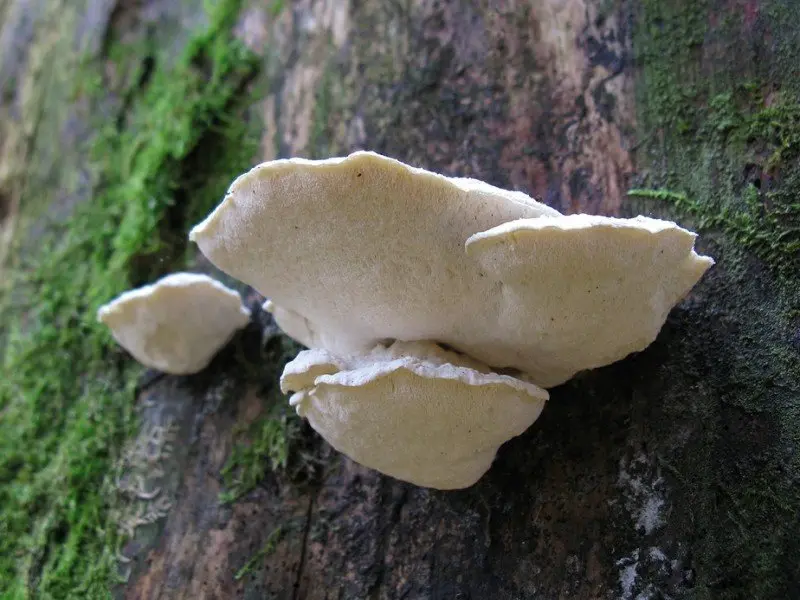Postia astringent (Postia stiptica)
- Division: Basidiomycota (Basidiomycetes)
- Subdivision: Agaricomycotina (Agaricomycetes)
- Class: Agaricomycetes (Agaricomycetes)
- Subclass: Incertae sedis (of uncertain position)
- Order: Polyporales (Polypore)
- Family: Fomitopsidaceae (Fomitopsis)
- Genus: Postia (Postiya)
- Type: Postia stiptica (Astringent Postia)
- Oligoporus astringent
- Oligoporus stipticus
- Polyporus stipticus
- Leptoporus stipticus
- Spongiporus stipticus
- Oligoporus stipticus
- Spongiporus stipticus
- Tyromyces stipticus
- Polyporus stipticus
- Leptoporus stipticus

Author of the photo: Natalia Demchenko
Postia astringent is a very unpretentious tinder fungus. It is found everywhere, attracting attention with the white color of the fruiting bodies.
Also, this mushroom has a very interesting feature – young bodies often guttate, releasing drops of a special liquid (as if the mushroom is “crying”).
Postia astringent (Postia stiptica) – an annual tinder fungus, has medium-sized fruiting bodies (although individual specimens can be quite large).
The shape of the bodies is different: kidney-shaped, semicircular, triangular, shell-shaped.
Color – milky white, creamy, bright. The edges of the caps are sharp, less often blunt. Mushrooms can grow singly, as well as in groups, merging with each other.
The pulp is very juicy and fleshy. The taste is very bitter. The thickness of the caps can reach 3-4 centimeters, depending on the growing conditions of the fungus. The surface of the bodies is bare, and also with slight pubescence. In mature mushrooms, tubercles, wrinkles, and roughness appear on the hat. The hymenophore is tubular (like most tinder fungi), the color is white, maybe with a slight yellowish tint.
Astringent postia (Postia stiptica) is a mushroom that is unpretentious to the conditions of its habitat. Most often it grows on the wood of coniferous trees. Rarely, but still you can find fasting astringent on hardwood trees. Active fruiting of mushrooms of this genus occurs from mid-summer to the very end of autumn. It is very easy to identify this type of mushroom, because the fruiting bodies of the astringent postia are very large and taste bitter.
Postia viscous bears fruit from July to October inclusive, on stumps and dead trunks of coniferous trees, in particular, pines, spruces, fir. Sometimes this type of mushroom can also be seen on the wood of deciduous trees (oaks, beeches).
Astringent postia (Postia stiptica) is one of the little-studied mushrooms, and many experienced mushroom pickers consider it inedible due to the viscous and bitter taste of the pulp.
The main species, similar to the astringent postia, is the inedible poisonous mushroom Aurantioporus fissured. The latter, however, has a milder taste, and grows mainly on the wood of deciduous trees. Mostly fissured aurantioporus can be seen on the trunks of aspens or apple trees. Outwardly, the described type of fungi is similar to other fruiting bodies from the genus Tiromyces or Postia. But in other varieties of mushrooms, the taste is not as viscous and rancid as that of Postia Astringent (Postia stiptica).
On the fruiting bodies of the astringent postia, droplets of transparent moisture often appear, sometimes having a whitish color. This process is called gutting, and occurs mainly in young fruiting bodies.









